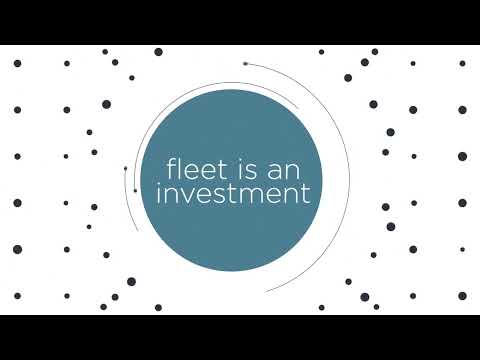-
What We DoFrom fleet management and productivity solutions to upfitting, fabrication, and insurance, Holman has the integrated automotive services expertise to keep your business moving.Overview
-
ResourcesWe have a lot to share. Browse our resources library for current insights, data, strategies, and success stories from our own experts in their respective fields.Overview
-
About UsWhen Holman was founded in 1924, we set something positive in motion. Our consistent focus on people and our commitment to integrity make us who we are today.Overview
 Join Our TeamWe’re not just in the automotive business, we’re in the people business. Join us for the ride.Browse Careers
Join Our TeamWe’re not just in the automotive business, we’re in the people business. Join us for the ride.Browse Careers
Eliminating Uncertainty Brings Clarity to Fleet Investment Decisions
Holman Marketing
December 19, 2017

I spend a significant portion of my time on a typical day, navigating investment decisions and capital allocation. These decisions ultimately impact nearly every aspect of business operations. They often serve as the foundation for our corporate roadmap, which means it is critical to ask the right questions from the very start. If you aren’t stopping to ask these questions from the very beginning, then it’s unlikely you’ll come up with the result that will meet your business needs.
At the core of any significant investment decision are several key factors that drive the process:
- What is the potential Return on Investment?
- What is the time horizon – short- or long-term?
- How does this investment impact other decisions you make as a company?
- Is the business generating the capital necessary to fund the investment and your other commitments?
- What is the exit strategy if things don’t go as planned?
Most companies’ challenge is ensuring these decisions are based on financial and operational facts rather than being clouded by unanswered theoretical questions. And in many ways, fleet management is a microcosm of this intricate business dynamic.
Removing uncertainty is vital to navigating your capital spending and better controlling the balance sheet. One way to do this is to leverage the power of technology and advanced data analytics to develop a comprehensive acquisition strategy.
What Factors Should Drive Your Fleet Investment Strategy?
When acquiring new fleet vehicles, you should consider several key factors. Possibly the most important one is how the fleet’s needs align with – and support – the overall objectives of your company. Developing a sound acquisition strategy begins with determining how these assets will contribute to the sustained success and growth of the business.
Once you have determined how the fleet will align with and support your business, here are a few additional factors to consider:
- Depending on the timeframe, how significant is the impact of these acquisitions to your company’s available capital or cash flow? When asking this question, be sure to consider the initial acquisition expense and the full term of the lease or loan payments and how these may adjust your fiscal outlook.
- What’s the direction of your company, and how will these units impact both short-term goals and long-term strategic priorities?
- What are all possible alternatives – cash purchase, lease, financing – and is this the most beneficial way to allocate your available capital?
- Is it essential for your organisation to diversify financing sources? Do you want to tie up bank lines to pay for fleet vehicles or diversify by leasing vehicles?
The answers to these questions will ultimately help to clarify the lease versus purchase decision. Also, keep in mind that the answers to these questions may change over time, and it is crucial to reassess your strategy regularly. Additionally, the implementation of the IFRS 16 accounting standards and the potential for tax reform loom on the horizon, potentially impacting your long-term strategy as well.
For many companies, there has always been a perceived fear of leasing, a myth that the company would end up paying more in terms of the total cost of ownership than owning a vehicle outright. Now more than ever, technology is changing that perception by transforming historical data into actionable information highlighting the actual total cost of ownership for each acquisition scenario. And when the data reveals the actual cost of ownership, leasing often becomes a more attractive option.
Informed Decisions Built on Comprehensive Analysis
By effectively leveraging data, not only will you know which vehicles are costing you the most but also why they are costing you the most. Is a particular leasing scenario inflating costs because your company isn’t cycling them out of service at the proper time? Is purchasing vehicles restricting the company’s cash flow, negatively impacting other core areas of the business?
By taking the time to perform an in-depth analysis and ask the right questions, you gain clarity and ensure you’re making important business decisions on factual information supported by historical data – not just intuition or estimation. We build good decision making on a foundation of thorough analysis. Interpreting the data is fundamental to the process. Allow this to guide your strategy and tailor acquisition models to the unique characteristics of your business.
Armed with this valuable business insight and supported by comprehensive data analytics, you can accurately forecast the outcome of virtually any acquisition scenario. By removing uncertainty, you will feel empowered to make the best possible decision for your organisation. In turn, you create a fleet that is no longer a cost to the company but rather a strategic asset that delivers value and helps the business generate revenue.
Related Resources
Explore more related industry news, insights, and developments.
It looks like you've navigated to our Holman UK website and are located outside of this region. Would you like to continue or select a different region?
✕






